Skyrocket Your Online Visibility with SEO

Establishing a robust online presence is important for businesses and individuals.
One of the most powerful tools at your disposal is Search Engine Optimisation, or SEO. This key facet of digital marketing elevates your website’s visibility in search engine results.
Next, we’ll explore what SEO means, why it’s so critical, and how it has transformed throughout the years.
What is SEO
Search Engine Optimisation (SEO) is the process of improving the quality and quantity of website traffic by increasing the visibility of a website or webpage to users of a web search engine.
SEO involves understanding how search engines work, what people search for, and the keywords and phrases they use.
It also involves optimising a website’s content, structure, and coding to make it more search engine-friendly and relevant to searchers.
Why is SEO Important
SEO plays a vital role in the online world as it helps businesses and individuals increase their online visibility, drive organic traffic, and ultimately, boost conversions and revenue.
With millions of websites vying for attention, SEO helps websites stand out from the competition and reach their target audience.
The importance of SEO can be summarised in the table below:
Benefits of SEO | Description |
Increased online visibility | Higher search engine rankings lead to more visibility and credibility |
Organic traffic | Targeted traffic that is more likely to convert |
Cost-effective | No need to pay for ads, reducing marketing costs |
Improved user experience | Optimized websites provide a better user experience, leading to higher engagement |
Competitive advantage | Outrank competitors and establish market leadership |
Evolution of SEO
SEO has undergone significant changes over the years, driven by advancements in search engine algorithms and user behaviour.
The early days of SEO were marked by keyword stuffing and manipulative tactics, but search engines have since evolved to prioritise user-focused content and intent matching.
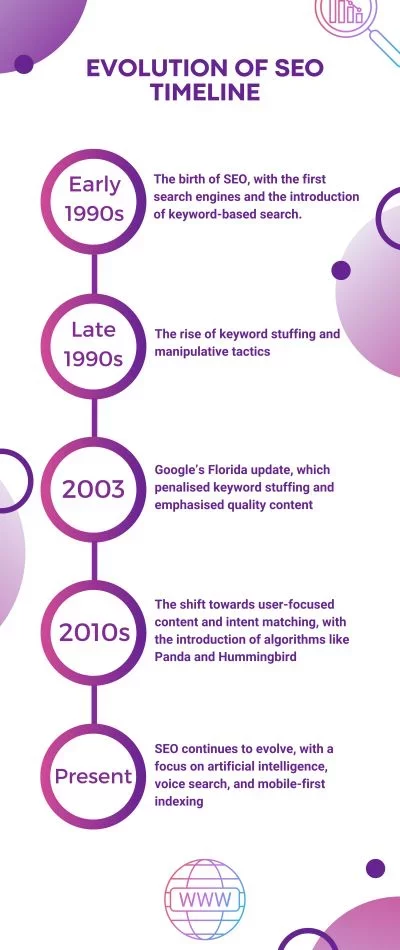
In the next section, we’ll explore the key elements of SEO and how to optimise a website for search engines.
Core Components of SEO
Search Engine Optimisation (SEO) is a multifaceted process that involves several key components. These components work together to improve a website’s visibility, credibility, and ranking on search engines.
The three primary components of SEO are On-Page SEO, Off-Page SEO, and Technical SEO.
On-Page SEO: A Beginner's Guide for Higher Google Rankings
On-page SEO is optimising individual web pages to rank higher in search engines. It involves optimising a page’s content and HTML elements to make it more search engine friendly and relevant to searchers.
Here are the key elements of on-page SEO:
1. Keyword Research and Optimisation
- Conduct keyword research: Identify the keywords and phrases your target audience uses to search for your content.
- Optimise your page title: Use your target keywords in your page title, which is the title that appears in search engine results pages (SERPs).
- Write a compelling meta description: Use your target keywords in your meta description, which is the summary of your page that appears in SERPs.
- Use header tags: Organise your content using header tags (H1, H2, H3, etc.) to make it easier for search engines to understand the structure of your page.
- Optimise your content: Use your target keywords throughout your content, but write for your audience, not just search engines.
2. Content Creation and Quality
- Create high-quality, engaging content: Your content should be informative, well-researched, and engaging for your audience.
- Use a conversational tone: Write in a natural, conversational tone that resonates with your audience.
- Optimise your content length: Aim for a content length that will cover the topic adequately, but make sure it’s not too long or too short for your audience.
- Use visuals: Use images, videos, and other visuals to break up your content and make it more engaging.
3. URL Structure and Optimisation
- Use descriptive URLs: Use URLs that accurately describe the content of your page.
- Use keywords in your URL: Use your target keywords in your URL, but make sure it’s not too long or too short.
- Use a URL structure that’s easy to crawl: Use a URL structure that’s easy for search engines to crawl and understand.
4. Image Optimisation
- Use descriptive alt tags: Use alt tags that accurately describe the content of your images.
- Use keywords in your alt tags: Use your target keywords in your alt tags, but make sure it’s not too long or too short.
- Optimise your image file names: Use descriptive file names for your images that include your target keywords.
5. Internal Linking
- Use internal linking: Use internal linking to help search engines understand the structure of your site and the relationships between your pages.
- Use descriptive anchor text: Use descriptive anchor text for your internal links that accurately describe the content of the page you’re linking to.
- Use a logical linking structure: Use a logical linking structure that makes sense for your audience and helps them navigate your site.
6. Mobile-Friendliness and Page Speed
- Ensure your site is mobile-friendly: Ensure that your site is optimised for mobile devices and provides a good user experience for mobile users.
- Optimise your page speed: Optimise your page speed to ensure that your site loads quickly and provides a good user experience for your audience.

Off-Page SEO: Proven Link Building Strategies for Top Rankings
Off-page SEO involves building your website’s authority and reputation by acquiring high-quality backlinks from other websites.
Here are some proven link-building strategies:
1. Guest Blogging
- Find relevant blogs: Find blogs that are relevant to your industry and target audience.
- Create high-quality content: Create high-quality content that provides value to the blog’s audience.
- Include a link to your site: Include a link to your site in your author bio or within the content of your guest post.

2. Broken Link Building
- Find broken links: Find broken links on other websites that are relevant to your industry and target audience.
- Create a replacement link: Create a replacement link that provides similar content to the broken link.
- Reach out to the website owner: Reach out to the website owner and offer to replace the broken link with your new link.
3. Skyscraper Technique
- Find a popular piece of content: Find a popular piece of content that’s relevant to your industry and target audience.
- Create a better piece of content: Create a better piece of content that provides more value to the audience.
- Reach out to the website owners: Reach out to the website owners who linked to the original piece of content and offer to replace it with your new link.
4. Resource Page Link Building
- Create a resource page: Create a resource page that provides value to your audience and links to other high-quality websites.
- Reach out to other website owners: Reach out to other website owners and ask them to link to your resource page.
5. Reviews and Mentions
- Encourage reviews: Encourage your customers to leave reviews on your website or on third-party review sites.
- Monitor mentions: Monitor mentions of your brand online and reach out to the website owners to ask for a link.
Technical SEO: The Ultimate Guide
Technical SEO is the process of optimising your website’s technical elements to improve its search engine rankings.
Here are some key elements of technical SEO:
1. Site Speed and Performance
- Optimise your site speed: Optimise your site speed to ensure that it loads quickly and provides a good user experience for your audience.
- Use a content delivery network (CDN): Use a CDN to distribute your content across different servers and improve your site speed.
- Optimise your images: Optimise your images to reduce their file size and improve your site speed.
2. Mobile-Friendliness
- Ensure your site is mobile-friendly: Ensure that your site is optimised for mobile devices and provides a good user experience for mobile users.
- Use a responsive design: Use a responsive design that adapts to different screen sizes and devices.
3. SSL and HTTPS
- Install an SSL certificate: Install an SSL certificate to secure your website and protect your audience’s data.
- Use HTTPS: Use HTTPS instead of HTTP to ensure that your website is secure and trusted by search engines.
4. XML Sitemap and Robots.txt
- Create an XML sitemap: Create an XML sitemap to help search engines understand the structure of your site.
- Optimise your robots.txt file: Optimise your robots.txt file to ensure that search engines can crawl and index your site correctly.

5. Structured Data and Schema Markup
- Utilise Structured Data: Implement structured data to enhance how search engines interpret your content, leading to improved visibility and rich results like featured snippets and knowledge graphs.
- Apply Schema Markup: Use schema markup to provide detailed context about your content, making it easier for search engines to categorise and display it effectively in search results. This can result in higher click-through rates and better user engagement.
Implementing the strategies can improve your website’s visibility, drive more traffic, and increase your search engine rankings.
Measuring SEO Success

Measuring the success of your SEO efforts is crucial for understanding the effectiveness of your strategies and making data-driven decisions.
This involves tracking key performance indicators (KPIs), utilising analytics tools, conducting regular SEO audits, and creating comprehensive reports.
Here’s a detailed look at how to measure SEO success effectively.
SEO Analytics and Monitoring
Key Performance Indicators (KPIs) for SEO
KPIs are essential metrics that help you gauge the performance of your SEO efforts.
Here are some of the most important SEO KPIs to track:
- Organic Traffic: Measures the number of visitors coming to your site from search engines.
- Keyword Rankings: Tracks the position of your target keywords in search engine results pages (SERPs).
- Click-Through Rate (CTR): The percentage of users who click on your site’s link in the search results.
- Bounce Rate: The percentage of visitors who leave your site after viewing only one page.
- Conversion Rate: The percentage of visitors who complete a desired action, such as making a purchase or filling out a form.
- Backlinks: The number and quality of external links pointing to your site.
- Page Load Time: How quickly your web pages load, which affects user experience and rankings.
- User Engagement: Metrics like average session duration and pages per session.
Utilising Tools like Google Analytics and Google Search Console
Google Analytics and Google Search Console are powerful tools for monitoring and analysing your SEO performance:
- Google Analytics: Provides insights into user behavior, traffic sources, and conversion tracking. It helps you understand how visitors interact with your site and measure the effectiveness of your marketing efforts.
- Google Search Console: Focuses on search performance, offering data on search queries, impressions, clicks, and site health. It helps you identify and fix indexing issues, monitor backlinks, and optimise for mobile usability.

Regular SEO Audits
Conducting regular SEO audits is essential for maintaining and improving your website’s performance. An SEO audit typically covers:
- Technical SEO: Checks for issues like crawl errors, broken links, and site speed.
- On-Page SEO: Evaluates content quality, keyword usage, meta tags, and URL structure.
- Off-Page SEO: Analyses backlink profiles and social signals.
- User Experience (UX): Assesses mobile-friendliness, navigation, and overall user engagement.

SEO Reporting
Creating Reports to Track Progress and Inform Stakeholders
Effective SEO reporting involves creating detailed reports that track your progress and communicate results to stakeholders.
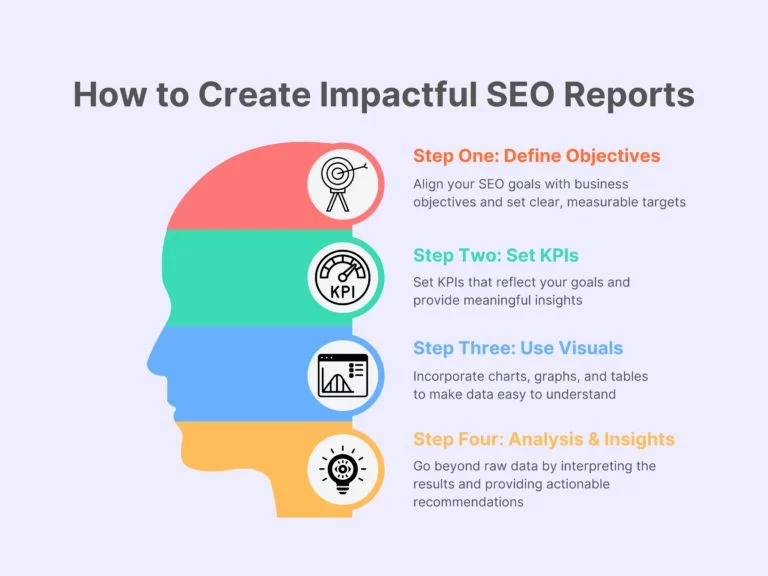
Interpreting Data to Make Informed SEO Decisions
Interpreting SEO data is crucial for making informed decisions and optimising your strategies.
Consistently monitoring KPIs, utilising powerful analytics tools, conducting regular audits, and creating comprehensive reports, can effectively measure and enhance your SEO success.
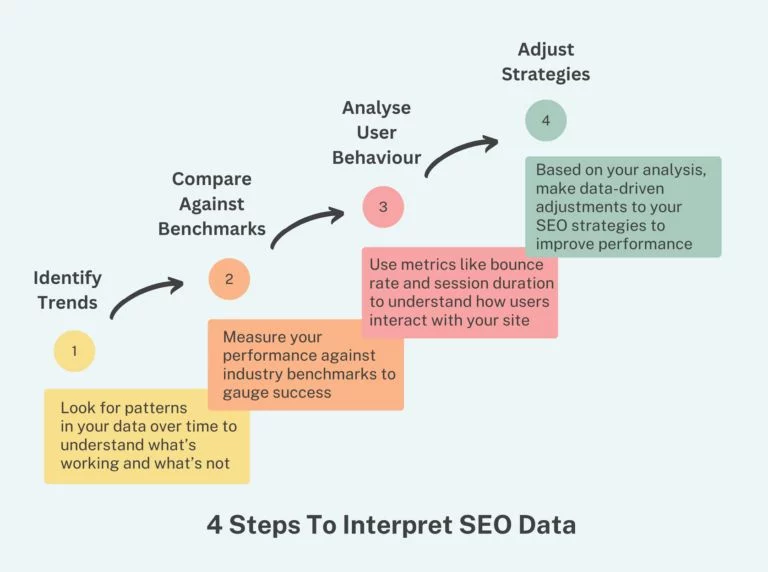
SEO Challenges and Considerations
Navigating the world of SEO comes with its own set of challenges and considerations. Staying ahead requires continuous adaptation and strategic planning.
Here are some of the key challenges and considerations in SEO:
1. Algorithm Updates and SEO Adaptability
Staying Updated with Search Engine Algorithm Changes
Search engines, particularly Google, frequently update their algorithms to improve search results and user experience.
These updates can significantly impact website rankings, making it crucial for SEO professionals to stay informed about the latest changes.
Steps to Stay Updated:
- Follow Official Channels: Regularly check updates from Google’s official blog and webmaster guidelines.
- Subscribe to SEO Newsletters: Stay informed by subscribing to reputable SEO newsletters and blogs.
- Join SEO Communities: Participate in forums and communities like Moz, Search Engine Land, and SEO subreddits.
- Attend Webinars and Conferences: Engage in industry events to learn from experts and network with peers.
Adapting SEO Strategies to Maintain and Improve Rankings
Adapting to algorithm updates involves revisiting and refining your SEO strategies to align with new guidelines and best practices.
Strategies for Adaptation:
- Conduct Regular Audits: Perform SEO audits to identify areas affected by algorithm changes.
- Focus on Quality Content: Ensure your content is high-quality, relevant, and user-focused.
- Diversify Traffic Sources: Rely on multiple traffic sources to mitigate the impact of algorithm changes.
Monitor Performance Metrics: Use tools like Google Analytics and Search Console to track performance and adjust strategies accordingly.
2. Local SEO
Optimising for Local Search and the Importance of Google My Business
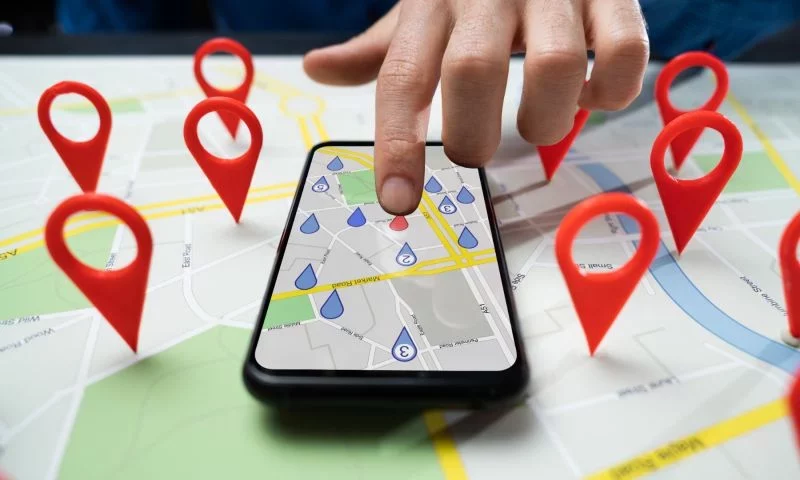
Local SEO is essential for businesses that serve specific geographic areas.
Optimising local search helps attract nearby customers and improve local visibility.
Steps to Optimise for Local Search:
- Claim and Optimise Google My Business (GMB): Ensure your GMB profile is complete with accurate business information, photos, and customer reviews.
- Use Local Keywords: Incorporate location-specific keywords in your content, meta tags, and URLs.
- Get Listed in Local Directories: Ensure your business is listed in local directories and citation sites with consistent NAP (Name, Address, Phone number) information.
Strategies for Improving Local Visibility and Attracting Nearby Customers
The table below shows the actions to take to improve your local visibility.
| Encourage Customer Reviews | Ask satisfied customers to leave positive reviews on your GMB profile and other review platforms |
| Create Local Content | Develop content that addresses local events, news, and community interests |
| Engage on Social Media | Maintain an active presence on social media platforms to connect with local customers |
3. Mobile SEO
The Rise of Mobile Search and Its Implications for SEO
With the increasing use of mobile devices for internet browsing, mobile SEO has become a critical aspect of overall SEO strategy.
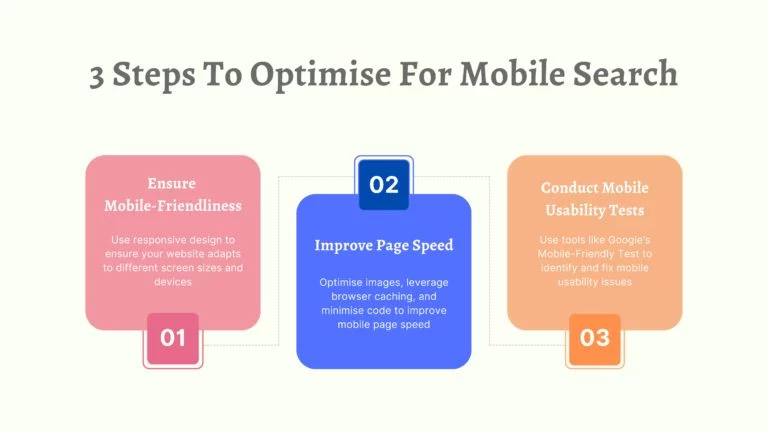
Responsive Design and Mobile-First Indexing
| Implement Responsive Design | Ensure your website layout adjusts seamlessly to various devices |
| Optimize for Mobile-First Indexing | Focus on mobile user experience as Google primarily uses the mobile version of a site for indexing and ranking |
| Use Accelerated Mobile Pages (AMP) | Implement AMP to improve load times and performance on mobile devices |
4. SEO for E-commerce
Unique SEO Considerations for Online Stores
E-commerce websites face unique SEO challenges due to the large number of product pages and the need for a seamless user experience.
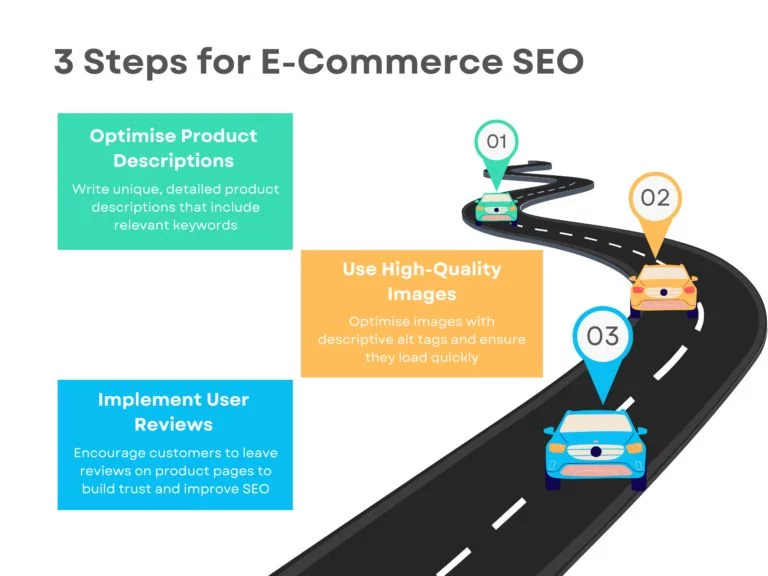
Product Page Optimisation and Structured Data for Rich Snippets
| Use Structured Data | Implement schema markup to provide search engines with detailed information about your products, such as price, availability, and reviews |
| Optimise Category Pages | Ensure category pages are well-organised and include relevant keywords |
| Enhance User Experience | Focus on site navigation, search functionality, and mobile optimisation to improve user experience and conversion rates |
How Websparks Can Boost Your SEO
From understanding and implementing on-page and technical SEO to navigating the complexities of local, mobile, and e-commerce SEO, the journey to SEO success is multifaceted and challenging. This is where the expertise of a professional SEO agency like Websparks becomes invaluable.
Websparks, with its years of experience and deep knowledge in SEO, is equipped to help clients navigate these challenges and achieve maximum results.
Our team of seasoned professionals stays abreast of the latest algorithm updates and industry trends, ensuring that your SEO strategy is always aligned with current best practices.
By leveraging advanced tools and conducting thorough SEO audits, Websparks identifies strengths and areas for improvement, crafting tailored strategies that drive organic traffic and improve search engine rankings.
Moreover, Websparks excels in creating detailed SEO reports that track progress and inform stakeholders, enabling data-driven decisions that enhance your SEO efforts.
Our expertise in local SEO ensures that your business attracts nearby customers, while their proficiency in mobile SEO guarantees a seamless user experience across all devices.
For e-commerce businesses, Websparks’ specialised strategies optimise product pages and utilise structured data to enhance search visibility and drive conversions.
Partnering with a professional agency like Websparks can significantly amplify your online presence and ensure sustained SEO success.
Our comprehensive approach, combined with our dedication to staying at the forefront of SEO advancements, makes us an ideal partner for businesses looking to achieve and maintain top search engine rankings.
Get in touch with us today to discuss how we can help to achieve your digital marketing goals.



